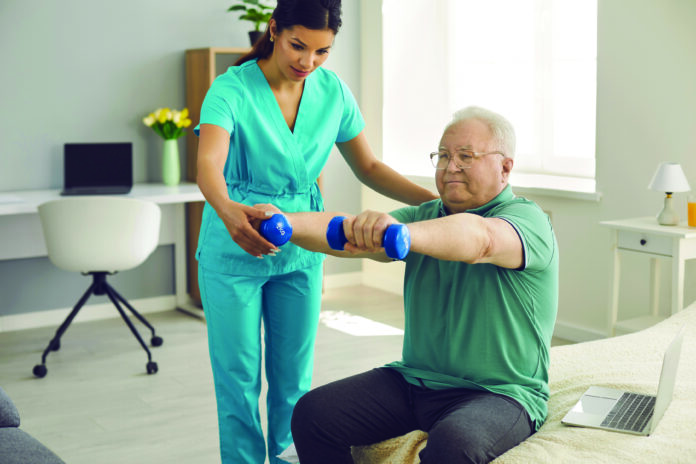SOURCE: arthritis.org (edited)
If you suffer from arthritis, you understand the restricted movement that causes – often painful. Physical therapy focuses on the body’s ability to engage in movement, including the movements arthritis makes difficult – anything from getting in and out of cars to climbing stairs. A physical therapist (PT) can develop a movement plan to help you stay active.
Physical Therapy Goals
For arthritis, goals typically include:
• Improving the mobility and restoring the use of affected joints
• Increasing strength to support the joints
• Maintaining fitness, and
• Preserving the ability to perform daily activities.
How a Physical Therapist Helps
To start, an individualized plan of exercises is developed. These exercises are designed to improve flexibility, strength and coordination, as well as balance to achieve optimal physical function. Physical therapists:
• Teach you proper posture and body mechanics for common daily activities to improve function and relieve pain.
• Show you how to properly use assistive devices such as walkers and canes.
• Recommend different treatment options, such as braces and splints to support joints, shoe inserts to relieve stress on the lower extremities, and hot and cold therapy to ease joint pain and stiffness.
• Suggest modifications to your environment, such as ergonomic chairs or a cushioned mat in your kitchen.
The Physical Therapy Session
The goal of a physical therapy session is to teach you how to do things in your treatment plan for yourself. The visits are often short – about an hour – and focus on identifying problems with your physical function and giving you strategies for care that you can do at home.
When visiting the PT, think clearly about what your complaint is and what you would like to be able to do after physical therapy – your goals. Your goal could be getting in and out of your car without pain, rising up on your toes or raising your arms to reach items in your kitchen cabinets, taking a walk or performing your job without pain in the hips, knees and feet, or even walking or running a 5K. Your PT can then work with you to develop a plan that helps you achieve those goals.
In most cases, you don’t need to see the PT every week. Periodic visits every few months are generally sufficient. When you experience a change in your health you can return to the physical therapist to update your exercise program and treatment strategy.
The key to a successful outcome is learning the exercises from a physical therapist and practicing them at home over the long term. Improvement is gradual – the body gets stronger and more adept slowly over time – so consistent practice is essential.
Finding a Physical Therapist
If you are interested in seeing a PT, ask your doctor for a recommendation. You may not need a doctor’s referral to see one, but check with your insurance to make sure it will be covered. You can also check with a reputable medical center in the area or visit the American Physical Therapy Association’s PT locator tool where you can search for a physical therapist by zip code and practice area.
Insurance Note: Your insurance may also limit the number of sessions for a particular problem, so make sure you know this information before you see a PT.


